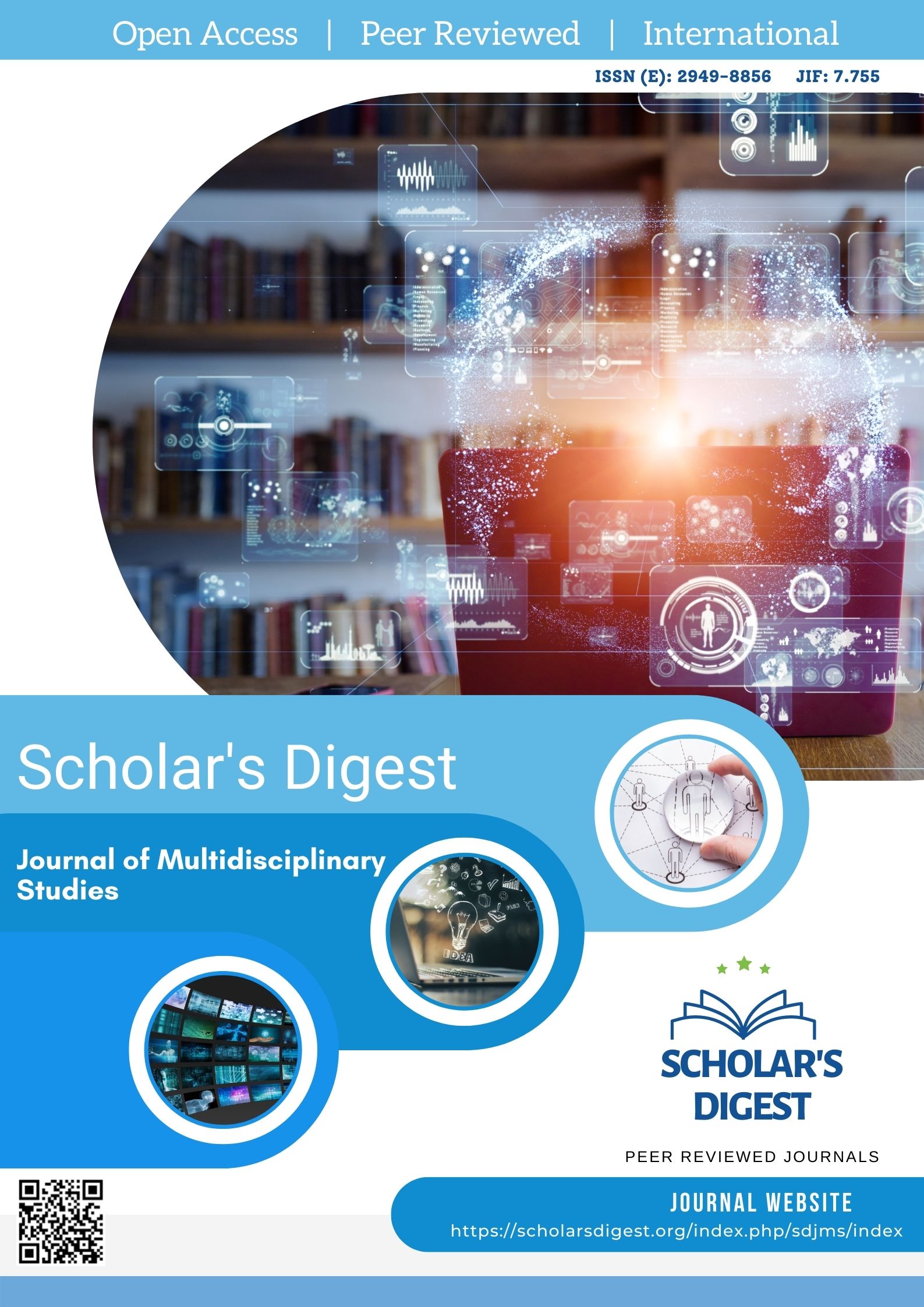THE EFFECT OF THE PARACHUTE STRATEGY ON FUTURE THINKING AMONG MIDDLE SCHOOL STUDENTS IN HISTORY
Keywords:
Parachute strategy, future thinking.Abstract
The goal of identifying the effect of the parachute strategy on future thinking among middle school students in history. To achieve the research goal, the researcher adopted an experimental design with a post-test for two equal groups. The groups were equalized by intelligence, previous achievement, and previous knowledge. The sample consisted of (66) students. There were (32) students for the experimental group and (34) students for the control group. A future thinking test was constructed for second-year intermediate students. Validity and reliability were extracted and were good, and appropriate statistical methods were used.
References
•Ambrose, S. A., Bridges, M. W., DiPietro, M., Lovett, M. C., & Norman, M. K. (2010). How Learning Works: Seven Research-Based Principles for Smart Teaching .
•Bonwell, C. C., & Eison, J. A. (1991). Active Learning: Creating Excitement in the Classroom. ASHE-ERIC Higher Education Report No. .
•Bonwell, C. C., & Eison, J. A. (1991). Active Learning: Creating Excitement in the Classroom. ASHE-ERIC Higher Education Report No. 1 .
•Cornish, E. (2004). Futuring: The Exploration of the Future. World Future Society .
•Godet, M. (2000). The Art of Scenarios and Strategic Planning: Tools and Pitfalls. Technological Forecasting and Social Change, 65(1), .
•Johnson, D. W., & Johnson, R. T. (2009). An Educational Psychology Success Story: Social Interdependence Theory and Cooperative Learning. Educational Researcher, 38(5), 365-379 .
•Johnson, P., Williams, M., & Clarke, S. (2017). The Role of Future Thinking in Academic Achievement of High School Students. Educational Psychology Review, 29(3), 312-330
•Michael, J. (2006). Where’s the Evidence that Active Learning Works? Advances in Physiology Education, 30(4),
•Michael, J. (2006). Where’s the Evidence that Active Learning Works? Advances in Physiology Education, 30(4)
Downloads
Published
Issue
Section
License

This work is licensed under a Creative Commons Attribution-NonCommercial 4.0 International License.








